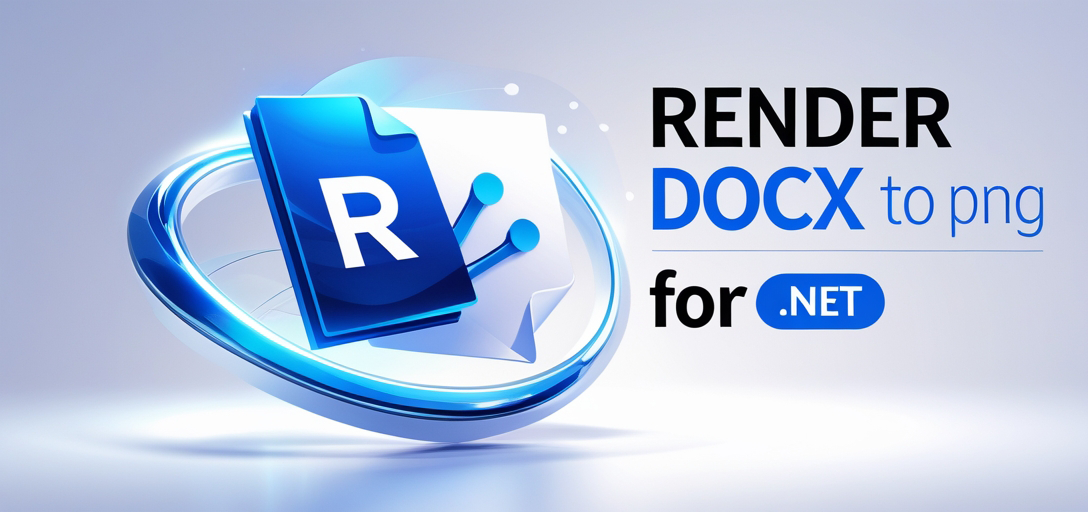How to Render DOCX to PNG Using GroupDocs.Viewer .NET: A Step-by-Step Guide
Rendering Basics
Introduction
Converting Word documents (DOCX) into PNG images is essential for preserving formatting and ensuring compatibility across platforms. This tutorial demonstrates how to use GroupDocs.Viewer .NET to render each page of a DOCX file as separate PNG images.

What You’ll Learn:
- Setting up GroupDocs.Viewer for .NET
- Converting DOCX documents into PNG images
- Configuring output directories and managing files efficiently With these skills, you’ll streamline your document workflows. Let’s dive in!
Prerequisites
Before starting, ensure the following setup:
Required Libraries:
- GroupDocs.Viewer for .NET (Version 25.3.0)
Environment Setup Requirements:
- Visual Studio installed on your machine
- Basic understanding of C# and file handling in .NET
Ensure all dependencies are included to smoothly follow along with this guide.
Setting Up GroupDocs.Viewer for .NET
To get started, install the GroupDocs.Viewer library via NuGet Package Manager or .NET CLI:
Using NuGet Package Manager Console
Install-Package GroupDocs.Viewer -Version 25.3.0
Using .NET CLI
dotnet add package GroupDocs.Viewer --version 25.3.0
Acquiring a License: GroupDocs offers various licensing options, including free trials and temporary licenses for testing. You can start with a free trial or apply for a temporary license.
Basic Initialization:
Once installed, initialize GroupDocs.Viewer in your C# project like this:
using GroupDocs.Viewer;
// Initialize viewer object with the input document path
using (Viewer viewer = new Viewer("path/to/your/document.docx"))
{
// Further operations here
}
Implementation Guide
Rendering a Document to PNG Images
In this section, we’ll render each page of a DOCX file as a PNG image using GroupDocs.Viewer.
Step 1: Define Output Directory and File Naming Pattern
Decide where the images will be saved. We’ll use Path.Combine to create the directory path:
string outputDirectory = Path.Combine(@"YOUR_OUTPUT_DIRECTORY");
string pageFilePathFormat = Path.Combine(outputDirectory, "page_{0}.png"); // Naming pattern for each page image
Step 2: Initialize Viewer and Configure PNG Options
Create a Viewer object with your document’s path. Use PngViewOptions to specify how the output should be rendered:
using (Viewer viewer = new Viewer(Path.Combine(@"YOUR_DOCUMENT_DIRECTORY", "SAMPLE_DOCX")))
{
PngViewOptions options = new PngViewOptions(pageFilePathFormat);
// Render each page of the document into separate PNG files
viewer.View(options);
}
This code snippet initializes a Viewer object, configures rendering options for PNG output, and processes the document.
Troubleshooting Tips:
- Ensure directory paths are correctly set.
- Verify that your input DOCX file is accessible at the specified path.
- Check if there are any permission issues with the output directory.
Setting Up Output Directory Path
Programmatically handling directories ensures flexibility in your application. Here’s how to determine and create an output directory:
Step 1: Create or Retrieve Output Directory
Ensure that the directory exists, creating it if necessary:
string GetOutputDirectoryPath()
{
string baseDirectory = @"YOUR_OUTPUT_DIRECTORY";
// Check existence and create directory if absent
if (!Directory.Exists(baseDirectory))
{
Directory.CreateDirectory(baseDirectory);
}
return baseDirectory;
}
Practical Applications
GroupDocs.Viewer for .NET can be integrated into various applications, such as:
- Automated Document Conversion Systems: Convert documents to images on-the-fly in a document management system.
- Web-based Document Viewers: Serve rendered PNGs as part of an online viewer interface.
- Archival Solutions: Store documents as image archives for long-term preservation.
Performance Considerations
For optimal performance:
- Monitor resource usage and optimize your application logic accordingly.
- Utilize memory efficiently by disposing of objects properly (e.g., using
usingstatements). - Consider asynchronous operations if dealing with large-scale document rendering tasks.
Conclusion
In this guide, you’ve learned how to render DOCX documents as PNG images using GroupDocs.Viewer for .NET. This skill enables seamless integration into various systems and enhances document sharing capabilities.
Next steps could include exploring additional features of GroupDocs.Viewer or integrating it within larger applications to handle diverse file types.
FAQ Section
What file formats does GroupDocs.Viewer support?
- It supports a wide range, including DOCX, PDF, XLSX, and more.
How do I handle large documents efficiently?
- Consider rendering only necessary pages or using asynchronous processing to manage resources effectively.
Can I customize the output image quality?
- Yes, GroupDocs.Viewer offers various options for adjusting quality settings in your render configuration.
What if the output directory isn’t writable?
- Ensure proper permissions are set and handle exceptions gracefully within your code.
How can I get support if needed?
- Visit GroupDocs Support Forum for assistance.
Resources
- Documentation: GroupDocs Viewer .NET Docs
- API Reference: GroupDocs API Reference
- Download GroupDocs.Viewer: GroupDocs Downloads
- Purchase License: GroupDocs Purchase Page
- Free Trial and Temporary License: GroupDocs Free Trial, Temporary License